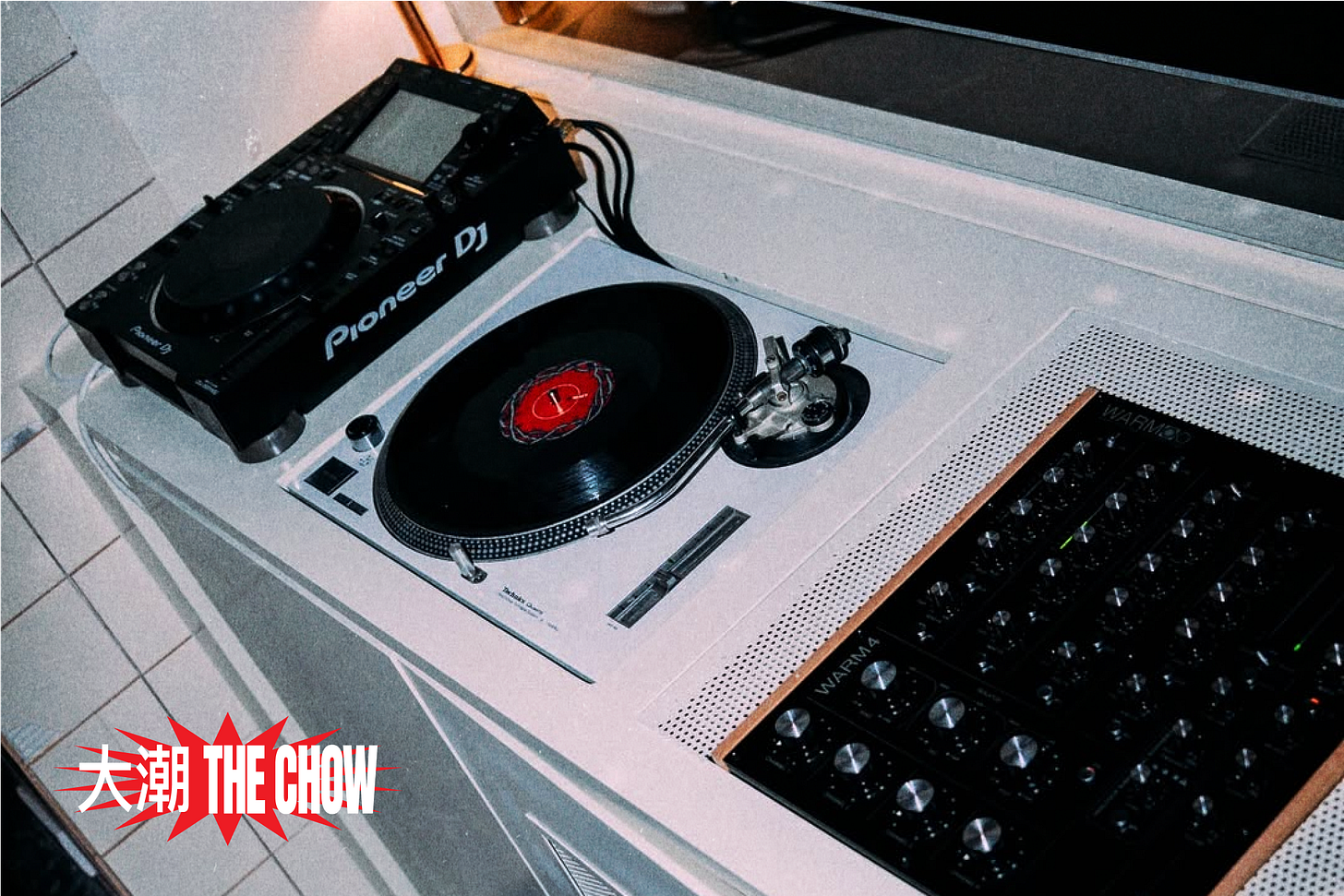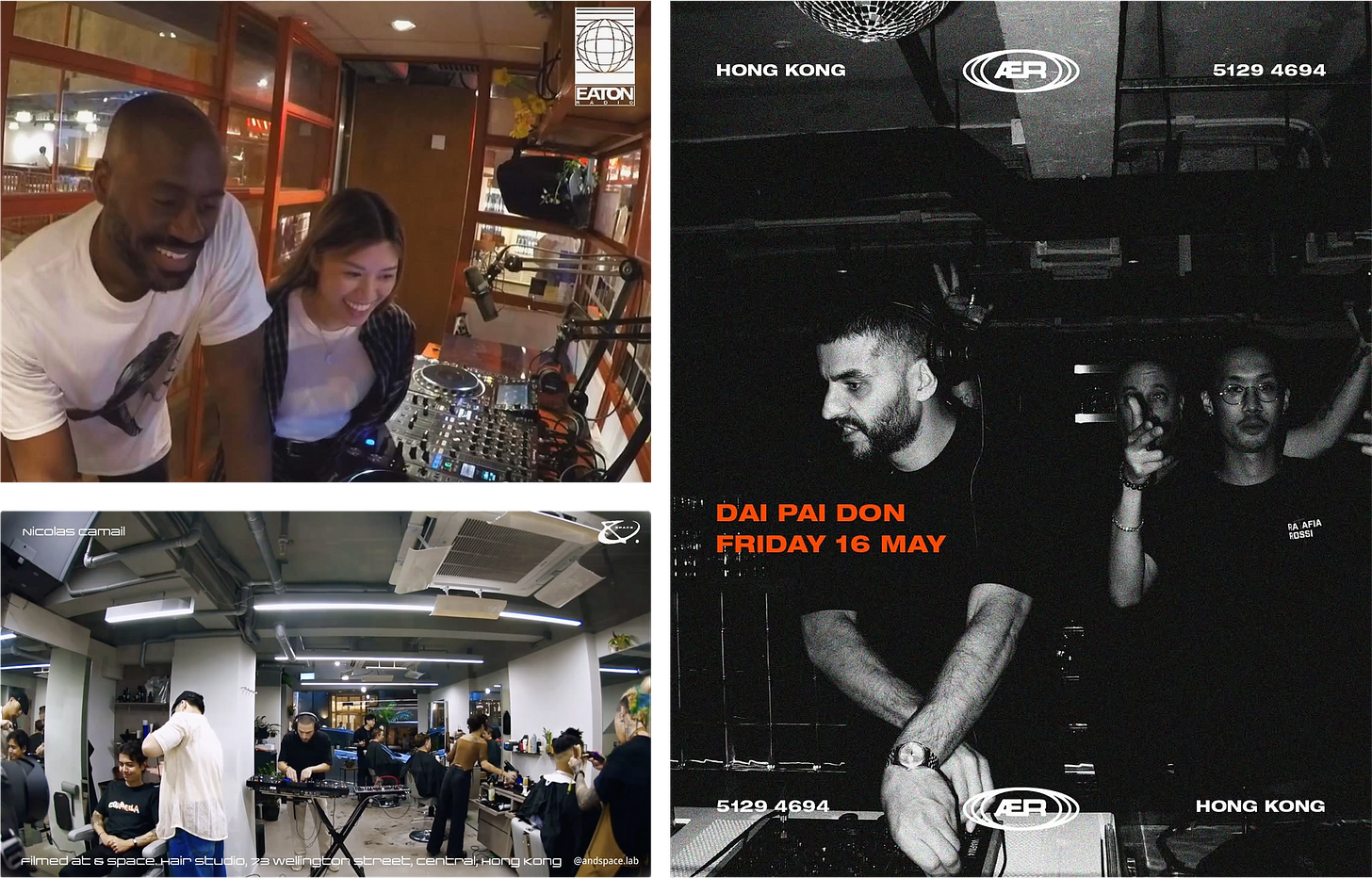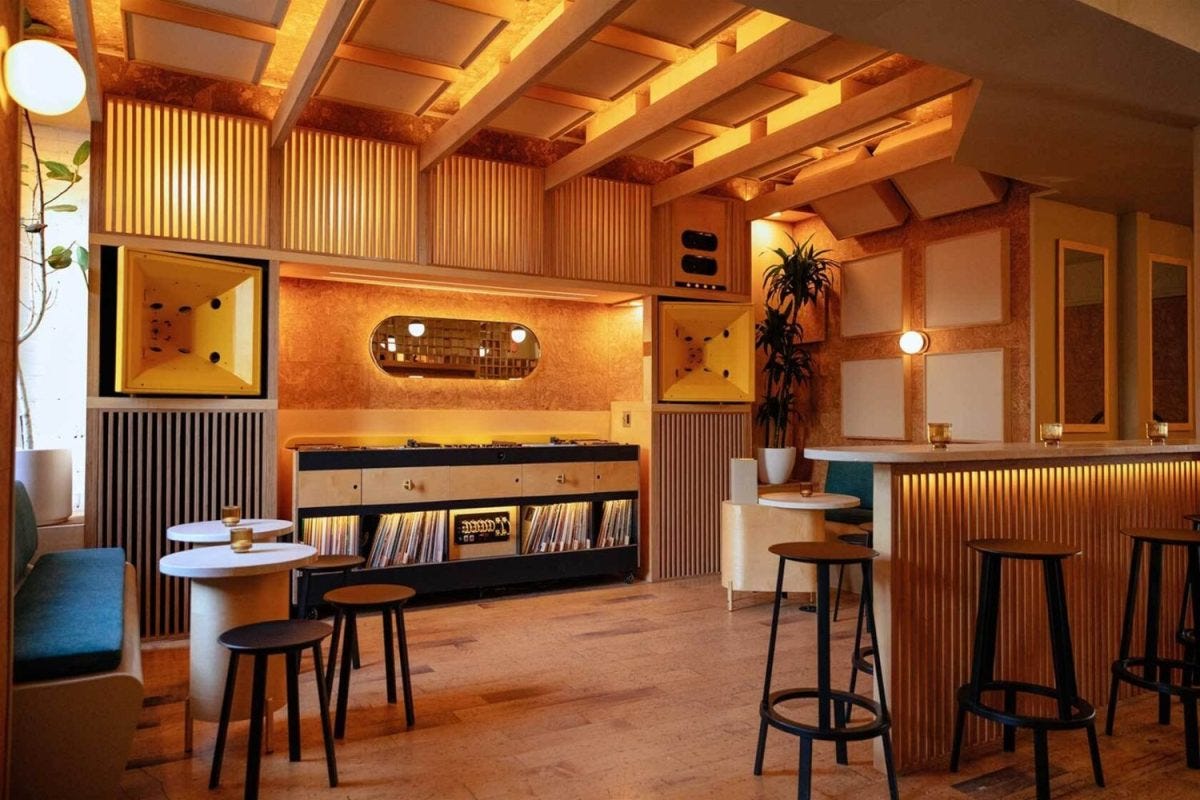The Revenge of the Radio Station
Why do hotels, hair salons, and restaurants have radios now?
Dark red and bold, a large sign with the words “ON AIR” hung on the open-air ceiling. What was on cue? Not the vinyl records of ’90s classics on the wall-attached shelf. A ditzy house beat and thumping bass emanated through an almost-human-sized vintage Altec speaker. At 5 p.m., it was still early; the crimson leather booths were waiting to be filled. But around 8 p.m., I’m told, DJs man the decks in the middle of the room around to play in either vinyl or digital.
For all intents and purposes, the room looked like a radio station, but it wasn’t. There were also dining tables, a glass cooler with drinks on standby, and an orange counter where a bartender shook mixers into tiki-style cocktail glasses. This is a new restaurant and bar in Hong Kong by the name of AER—which, unabbreviated, means “Aesthetic Radio.” Here, as the name might imply, radio is inseparable from the dining experience.
Radio is having a revenge moment. While the listenership in the popular analog audio medium has been on a slow decline for several years, people are launching radio stations and tuning into radio shows in places like boutique hotels, barbershops, and salons.
There’s a radio station at Eaton HK, a hotel in Hong Kong’s Jordan district. From a small studio in their basement floor, live sets from travelling musicians and audio shows on culture are broadcast on air. There’s also a DJ booth on the second floor of a hair studio in Hong Kong’s downtown, &Space., where music collective MOTH streams its live radio show.
“Everything with social media is so fast and easily accessible, and it’s all visual,” says Doyel Dawson, AER’s manager. “The sound—we’re trying to bring that back… We’re trying to bring back the culture of radio.” It’s a commitment that’s captured best by AER’s custom-built quadraphonic sound system and back-to-back shows that layer drum and bass, psychedelic techno, and ’90s house on top of one another. A dedicated soundproof recording room will soon follow for radio broadcasts, podcast recordings, and live sets, MixMag reports,
“For me, I start and end my day with music. It’s just ingrained into everything I do in life,” Doyel adds. “So if someone comes into this venue and hears a good sound—whether it brings them back to [memories] or gives them energy for the rest of their day—I want them to feel held when they come here, to feel freedom.”
This is also a “radio” in the sense that they employ DJs as members of their staff. Several of AER’s bartenders and servers are members of local music collectives. “We hire people who are influenced by music and the arts as well, because all the other skill sets can also be taught,” says Doyel. “But to work in a venue like this, you have to have a true passion.”
Retail’s swallowing of radios into their brand (or what I like to call “radio-ification”) is coming up in other parts of the world too. There’s a noodle bar in Sydney and a boutique hotel in London with in-house radio stations; OnlyNY, a New York City-based streetwear brand, collaborated with the New York Public radio for a capsule collection late 2024.
The reasons why all become clearer when you remember that in 2024, DJ sets escaped the confines of traditional nightlife and were soon found in coffee shops, bakeries, and run clubs. Radio-as-brand is simply the logical next step, grounding what was once a more ephemeral one-off live music experience into a brand and retail concept.
Plus, call it “The Sober Recession” or “Going Out to Stay In” (as this newsletter has before) but it’s also hard to deny that demand for traditional nightlife is falling. As budgets in traditional nightclubs dry up as a result, where do the DJs go? Boutique hotels, barbershops, and restaurants. DJs are desperately clawing for real gigs, no matter how unconventional the setting, for financial survival and to get their music recognized.
The radio-ification of local businesses could also be connected to the resurgence of analog communication technologies within the last few years. People are now increasingly turning to vinyl records, CDs, and film photography for the texture, rawness, and real human quality that social media can’t seem to replicate. In a world of algorithmically driven culture, analog mediums like radio can really elevate a brand.
But more important, I think, is to consider just how (and why) we got here.
One of the first places where sound became a big part of retail concepts was at the Japanese listening bar. Called kissa and found all across Japan, they emerged first after WWII, when students short on cash and office workers gathered to listen to records first and have a drink second. But they’ve become “it” concepts in NYC, London, Barcelona, Sydney and the world’s other cultural capitals.
In a 2008 ethnographic study of kissa, David Novak of Columbia University argued that listening is the “very crucible of musical innovation.” In Japan’s music kissa, Novak observes two different trajectories: “conservative sound-preserving institutions” in the original listening bars of post-war Japan, and “genre-destabilising experimental practices” in the more modern iterations of the concept.
In more layman terms, what this means is that Japanese listening bars are supposed to be places where people can engage with the real craft of music, while also allowing for new possibilities to emerge.
What does this mean for the radios in retail spaces? It doesn’t take an anthropologist to say this, but they should be places where we can become better listeners of music and where new possibilities can emerge—whether it’s community, more good art, or just meaningful conversations.
This isn’t such a radical idea, after all. Music has always been embedded in any place where people hang out. If the playlists of restaurants and shopping malls can impact sales and help people discover new music, what more can be unlocked when the radio asks us to listen closer?






